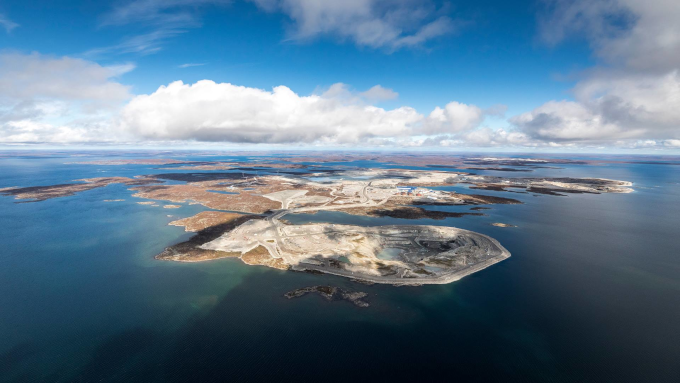
Diavik Diamond Mine Image credit: Rio Tinto
Rio Tinto, in its annual results, reports that diamond production had declined 14 per cent in 2020 as compared to 2019, attributing it to lower carats recovered at Diavik in Canada, where a 10% reduction in grade was partially offset by an increase in tonnes processed, as well as the closure of Argyle in Australia.
According to the statement, in diamonds, a heavy decline in spending on jewellery impacted underlying demand, while lockdowns in India’s manufacturing centres restricted the volume of rough diamonds purchased from miners. The COVID-19 pandemic has significantly disrupted the global demand for diamonds with many countries restricting the movement of citizens and closing retail outlets. Rio Tinto’s joint venture partner at the Diavik diamond mine filed for creditor protection in April 2020 and has since defaulted on its cash calls.
Together these circumstances were identified as an impairment trigger. As the diamond trade was affected by the COVID-19 pandemic, Rio Tinto’s rough-diamond sales revenue fell 26% to $459 million in 2020 as against $375 million in the year 2019. In consumer markets like India were lockdowns restricted spending on jewellery, resulting in the decline of purchasing of rough diamonds from miners.
Despite an increase in the quantity of ore processed by the company, diamond production dropped 14% to 14.7 million carats, reflecting a 10% reduction in the grade at the Diavik mine in Canada.
The realized diamond prices slid 21%, but the net earnings for the diamond division came to $9 million, compared with a $21 million loss in 2019.
Rio Tinto expects to take five years to decommission the Argyle mine and rehabilitate the area, followed by a further period of monitoring. The company has forecasted an output of 3 million into 3.8 million carats from its 40% share of Diavik in 2021 compared with 3.7 million in 2020.
Rio Tinto Chief Executive Jakob Stausholm said: "It has been an extraordinary year – our successful response to the COVID-19 pandemic and strong safety performance.”
Aruna Gaitonde, Editor in Chief of the Asian Bureau, Rough&Polished
